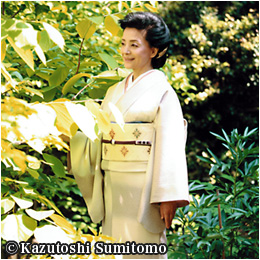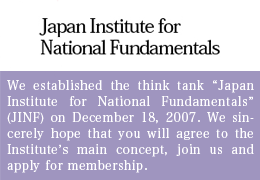MEDIA BIAS ABOUT NUCLEAR SAFETY MUST NOT AFFECT JAPAN’S ENERGY POLICY
Four Japanese power companies have recently decided to decommission a total of five aging nuclear reactors, including Unit 1 and Unit 2 of the Mihama Nuclear Power Plant in Fukui Prefecture operated by Kansai Electric Power. Japan Atomic Power, Kyushu Electric Power, and Nippon Electric Power will each dismantle one nuclear reactor, all of which have been in service since the 1970s.
Meanwhile, any restart of nuclear power stations shut down since the megaquake of March 2011 continues to be delayed, casting a dark shadow over the prospects of the nation’s future nuclear power generation. This is in marked contrast to the high-paced construction of nuclear power plants in many other nations, which has created a growing demand for high-level Japanese nuclear power generation technologies.
Primarily because the Japanese government and utilities have been unable to obtain the understanding of the public about the safety and reliability of nuclear power generation, plans to resume operations at nuclear power plants have yet to be implemented. I cannot but attribute this failure largely to the bias of the Japanese media. I believe the fundamental responsibility of the media is to get beyond the basic biases of the pro-nuclear and anti-nuclear camps, and provide concrete information as objectively and scientifically as possible on what is dangerous and what is safe about nuclear power generation.
And yet the press rarely provides fair and objective information, basically because the Japanese mass media generally does not favor nuclear power generation. I was convinced of this when I saw how the prime time “Hodo Station” news program on TV Asahi handled the coming resumption of operations at the Sendai Nuclear Power Plant operated by Kyushu Electric Power in Kagoshima Prefecture.
In a March 24 special report, Hodo Station’s anchorman Ichiro Furutachi questioned the disaster preparedness of the Sendai facility, saying:
“At this juncture, I would like to once again look back over the nuclear disaster of four years ago that hit the Fukushima No. 1 nuclear power plant (run by Tokyo Electric Power). Some experts view the disaster as having been caused by the massive tsunami triggered by the megaquake, destroying the plant’s facilities and causing a total loss of power within the compound. Meanwhile, there are others who attribute the damage to the quake itself, maintaining that the quake, which occurred shortly before the tsunami, destroyed the plant’s vital equipment, leading to the catastrophe that followed…Up until now, however, whether the disaster was really caused by the earthquake, or by the tsunami, has not been clearly established.”
Furutachi went on to question whether the resumption of operations at Sendai slated for July has been subject to a thorough enough inspection.
Wrong Question
Three days later, on March 27, I had a chance to discuss Furutachi’s viewpoint with Professor Tadashi Narabayashi of Hokkaido University on my own weekly regular Internet TV show. Professor Narabayashi is a leading nuclear expert. Pointing to “some serious problems” with what the anchorman had to say, the professor brushed aside as completely irrelevant his doubt about the real cause of the disaster.
As Prof. Narabayashi explained, four separate bodies—representing the government, the Diet, Tokyo Electric Power, and the private sector—have already voiced their opinions on the cause of the Fukushima disaster. “Hodo Station” chose to favor the views of the Diet, having a former member of its Nuclear Accident Investigation Committee, Emeritus Professor Katsuhiko Ishibashi of the national Kobe University, appear on the show with Furutachi.
Of the four accident investigation teams, only the Diet team has attributed the disaster to the megaquake, postulating the possibility that it could have severely damaged the plumbing at the Fukushima No. 1 plant. However, Prof. Narabayashi pointed out that this possibility was rejected by the Nuclear Regulatory Authority (NRA), whose experts attributed the cause of the disaster solely to the tsunami. Narabayashi explained:
“In its July 18, 2014 interim report based on an extensive analysis of the disaster, the NRA rejected the conclusion of the Diet investigation team that the earthquake damaged the plant’s plumbing system, leading to the disaster. The report was recognized by the NRA as its official report on the causes of the disaster last October 8.”
Prof. Narabayashi’s explanation is eminently comprehensible: Had the plumbing burst, the highly pressurized hot water inside the nuclear reactor would have naturally gushed out. In that case, dense steam would have filled the reactor building. A thundering roar would also have occurred. And yet none of the plant’s employees testified to having heard such a roar when questioned by members of the accident investigation teams.
That the earthquake caused no damage to the plant’s equipment can be explained by the fact that the emergency condenser at the plant remained in operation until hit by the tsunami, reducing the pressure within the reactor from 75 to 46 atm in 15 minutes initially, later increasing it back to 70 atm. All this data was securely kept on record; had the plumbing been damaged by the quake, the pressure within the reactor would not have been managed properly in this way. That the pressure inside the reactor was properly adjusted shows the earthquake itself did no damage to the plant’s equipment.
I previously mentioned this in an August 14-21 column last year. With the NRA having rejected the quake itself as the cause of the damage, what plausible reasons can Furutachi have for not recognizing these findings? Observes Prof. Narabayashi:
“In Japan, we have always been extremely mindful of the danger of earthquakes to nuclear power stations. Quakes are sometimes accompanied by deadly tsunamis. But we nuclear experts, as well as those opposed to nuclear power generation, have sadly overlooked this crucial factor. This is a point all of us must sincerely reflect on. If we are to genuinely enhance the safety of nuclear power generation, we must grapple squarely with the real cause of the Fukushima catastrophe. What is pertinent is to come to grips with the exact cause of the accident. It simply isn’t fair to attempt to link the disaster to the earthquake for the sole purpose of campaigning against nuclear power generation.”
Violation of Broadcasting Ethics
On the “Hodo Station” show referenced earlier, Prof. Ishibashi, the former member of the Diet committee, had this to say about Kyushu Electric’s preparations for the resumption of operations at its Sendai plant:
“NRA safety standard rules require that nuclear power stations scrutinize three types of earthquakes—inland crustal, inter-plate, and marine plate. For a close examination to determine their respective intensity, they must select earthquakes in each of the three categories that are considered to be most damaging to the plants’ premises. These rules have firmly been established, and yet Kyushu Electric has only examined the possible effects of inland crustal earthquakes.”
Prof. Narabayashi rebuffed this explanation as contrary to the truth, noting:
“A report filed by Kyushu Electric can be found on its own home page as well as the NRA’s, listing inland crustal earthquakes as possibly the most detrimental to Sendai among the afore-mentioned categories. Such crustal quakes are further broken down into seismic motions with specified epicenters and those without specified epicenters. The latter are believed to cause the greatest seismic shock. Having carried out its calculations with these assumptions, Kyushu Electric set the expected maximum tremor at 540 gal. But the actual earthquake-resistant measures adopted at its Sendai nuclear power station presupposes 620 gal—80 gal higher to be on the safe side.”
When the 2011 megaquake occurred, the Onagawa nuclear power station, operated by Tohoku Electric, was the closest to its epicenter and therefore was subject to the strongest seismic motions—measured at 575 gal. At Sendai, however, anti-earthquake reinforcement measures have been worked out on the basis of 620 gal to ensure maximum safety. This means the margin of safety has been further increased. “Hodo Station” failed to mention this.
In point of fact, “Hodo Station” was harshly criticized in connection with its reporting on Sendai by the Broadcasting Ethics & Program Improvement Organization (BPO) in a memorandum issued last February 9. The criticism was aimed at the program’s September 10, 2014 broadcast, which the BPO sternly pointed out “violated broadcasting ethics by seriously lacking objectivity, accuracy, and fairness.”
Specifically, the memorandum noted: “The program unfairly edited the remarks by NRA chairman Shunichi Tanaka. Tanaka was commenting on a tornado, but the program edited his remarks to create the impression that he was actually talking about a volcano.” As far as the program’s March 24 broadcast spotlighting Sendai is concerned, Furutachi and his team did nothing to heed the BPO’s admonition. There is absolutely no reason why Japan’s vital energy policy should be swayed by such a twisted posture toward nuclear power generation on the part of a popular private TV news program.
There are other problems with the show’s handling of nuclear-related news that I need to point out—specifically the relationship between a dreaded Nankai Trough megaquake and the Sendai nuclear power plant. I will take up this issue in a future column.
(Translated from “Renaissance Japan” column no. 650 in the April 9, 2015 issue of The Weekly Shincho)








